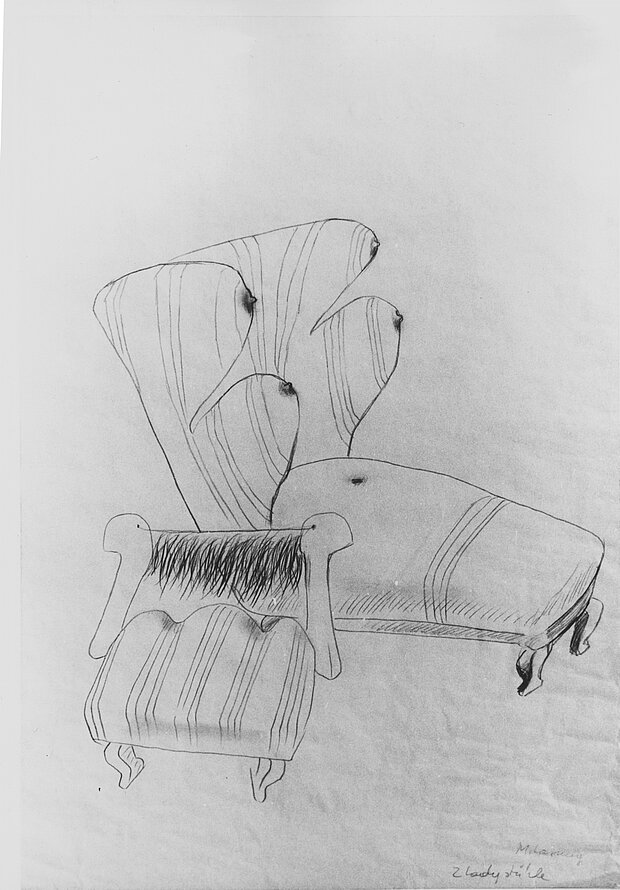
Lassnig, Maria
2 Ladystühle aus der Sesselserie
1970

© mumok
| Object description | Pencil on paper |
|---|---|
| Material | |
| Technique | |
| Dimensions |
Objektmaß:
height: 61,4 cm,
width: 43,1 cm
Rahmen:
height: 74,6 cm,
Untitled: 56,4 cm,
depth: 3,4 cm
|
| Year of acquisition | 1970 |
| Inventory number | G 29/0 |
| Creditline | mumok - Museum moderner Kunst Stiftung Ludwig Wien |
| Rights reference | Maria Lassnig Stiftung/Bildrecht, Wien |
| Further information about the person | Lassnig, Maria [GND] |
The “2 Lady Chairs” from the “Armchair Series” show objects somewhere between human being and material thing. A wingback chair and a stool are transformed into a female body—or vice versa: These items of furniture change form and come to increasingly look like the human body that makes use of them. The human being and its object of use interpenetrate each other and become a body of a third kind. The large padding on the back of the armchair reshapes as breasts, and the slightly curved seat becomes a naked belly with a belly button. The form of the armchair is felt through the body of the artist. At the same time as she made these anthropomorphic items of furniture, Maria Lassnig also produced her first cartoon film, entitled Chairs, in which chairs move to music like people. The drawing “2 Lady Chairs” was made in New York, where Lassnig had taken up a studio in the East Village. After she has created her famous “body awareness paintings,” Lassnig moved to America in 1968. There, her work to date was not understood, and she initially turned away from what she called her “inner world pictures” and painted in a realistic fashion, wanting to show that what she could do, as she herself said. This led to surrealist motifs that combined her body with the world of objects and link up the experience of an inner world with the experience of the external world.
© mumok – museum moderner kunst stiftung ludwig wien